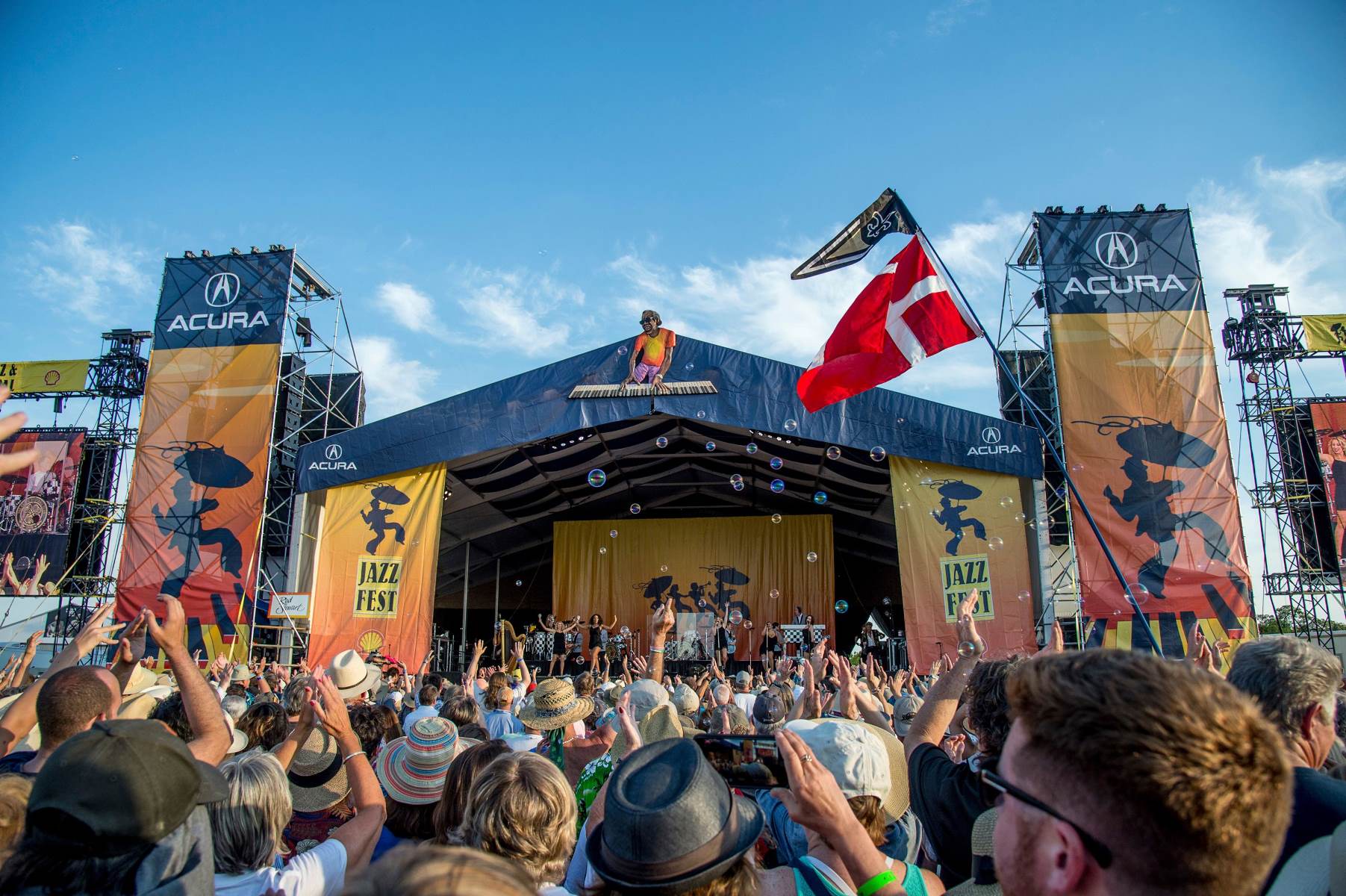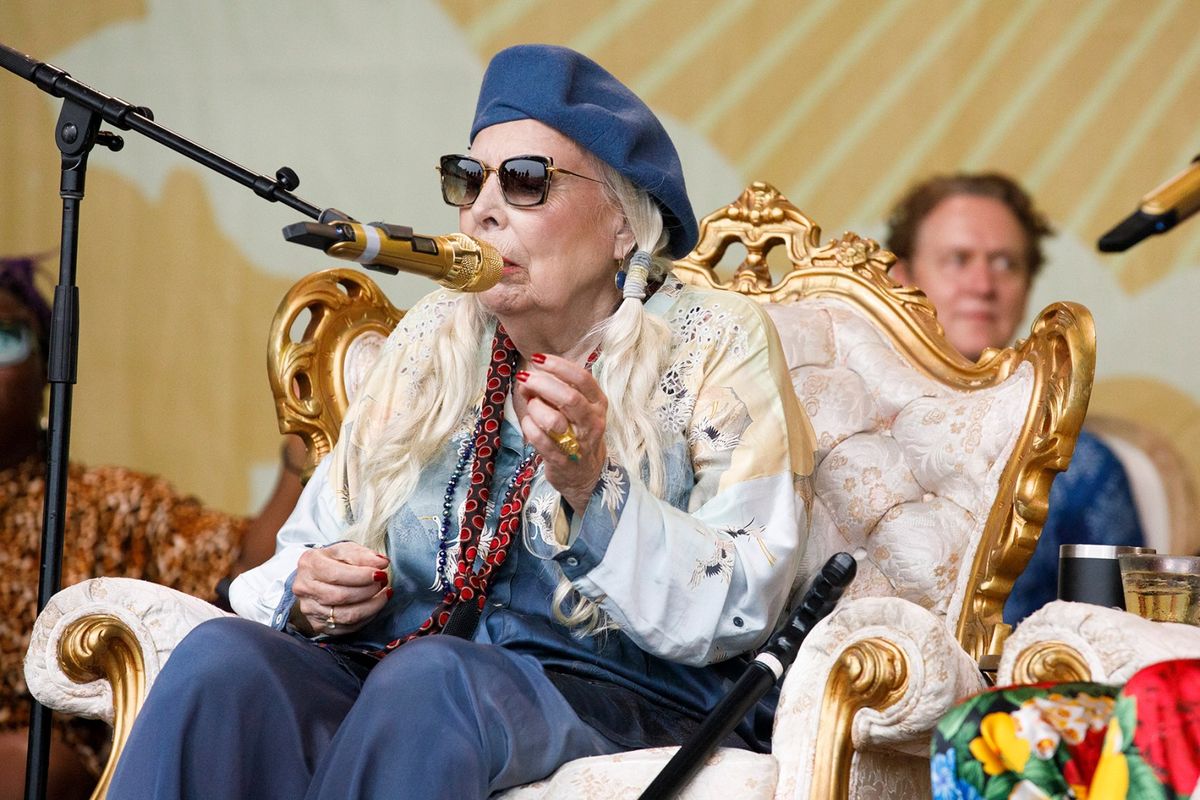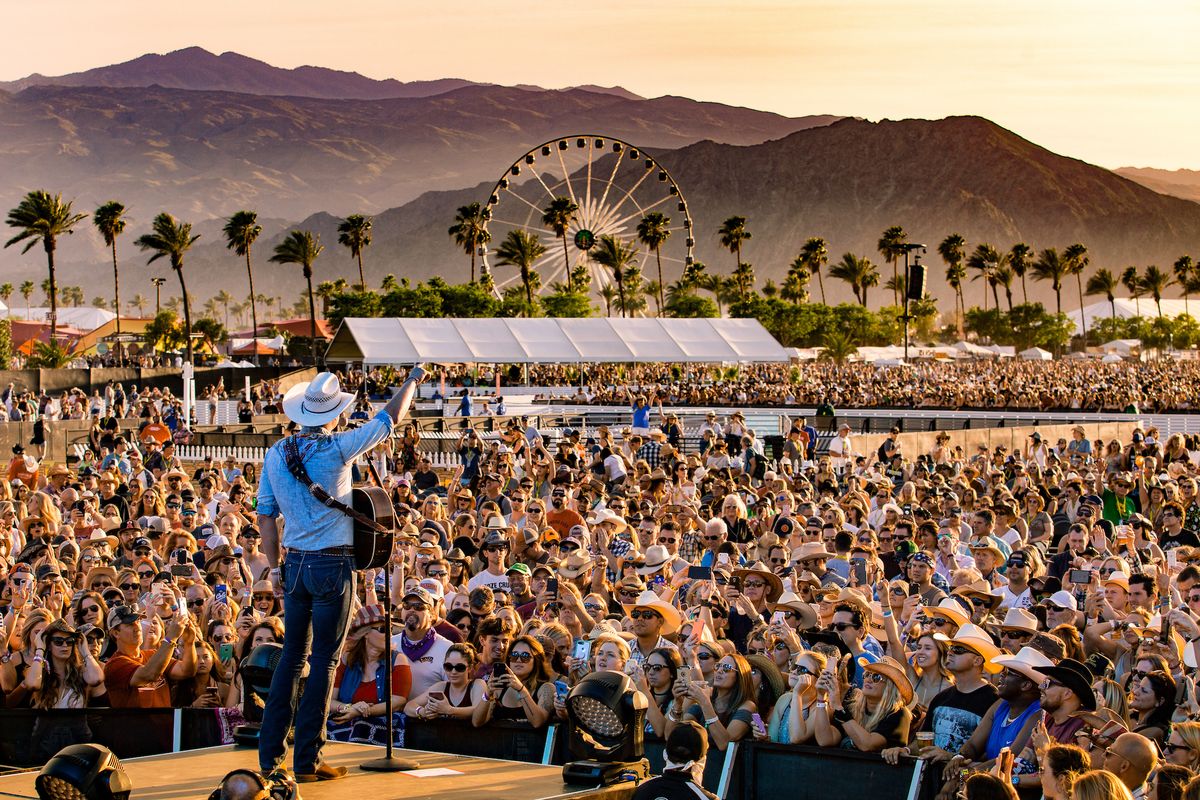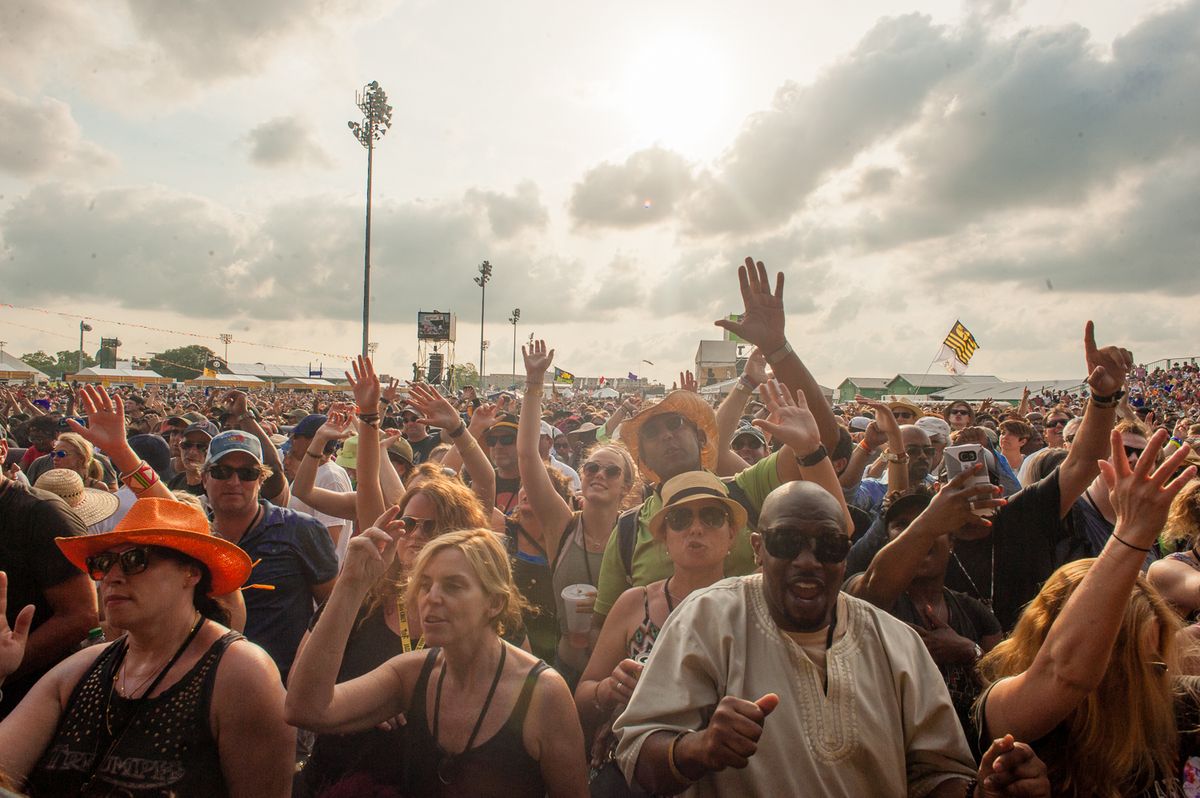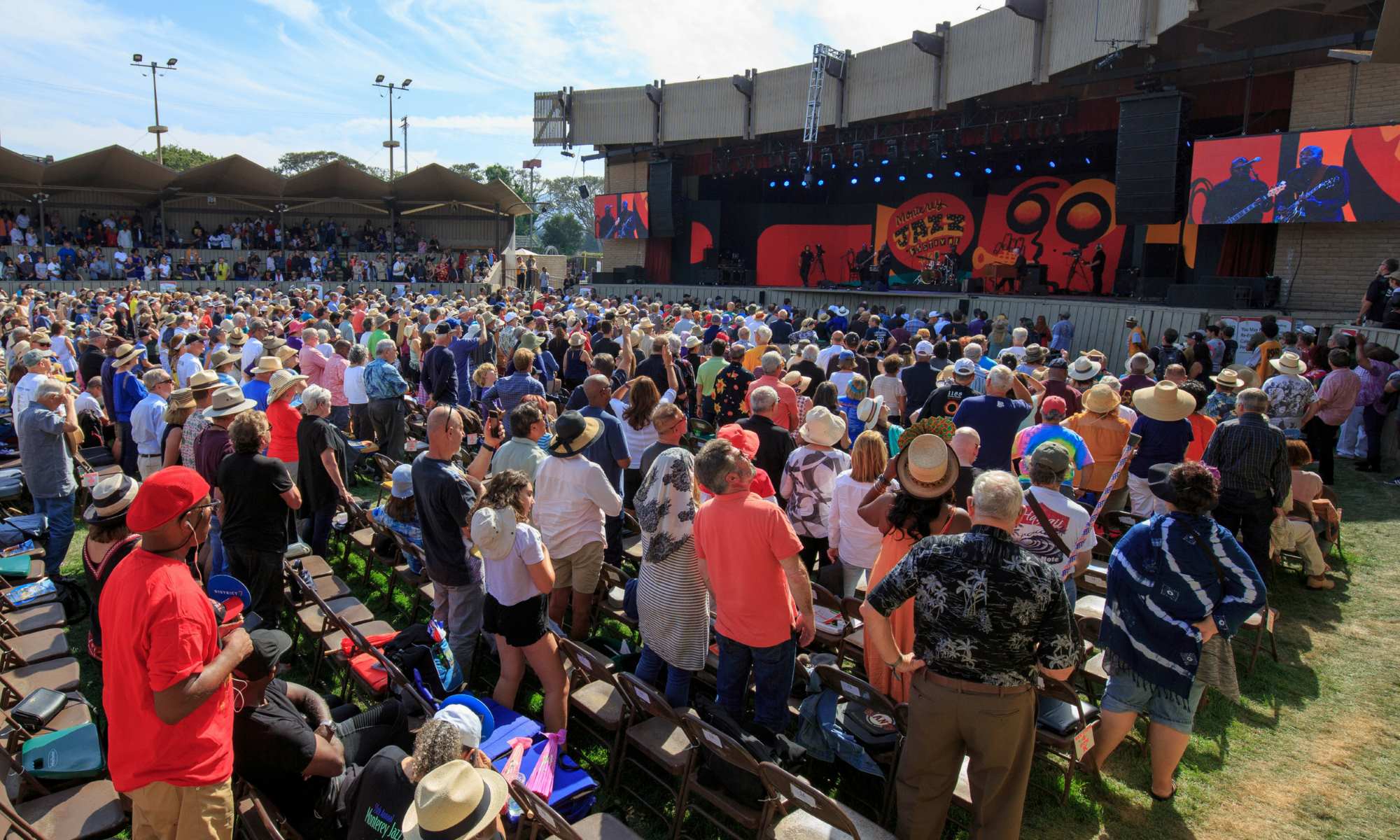Home>Events & Info>Festival>Where Is Newport Jazz Festival
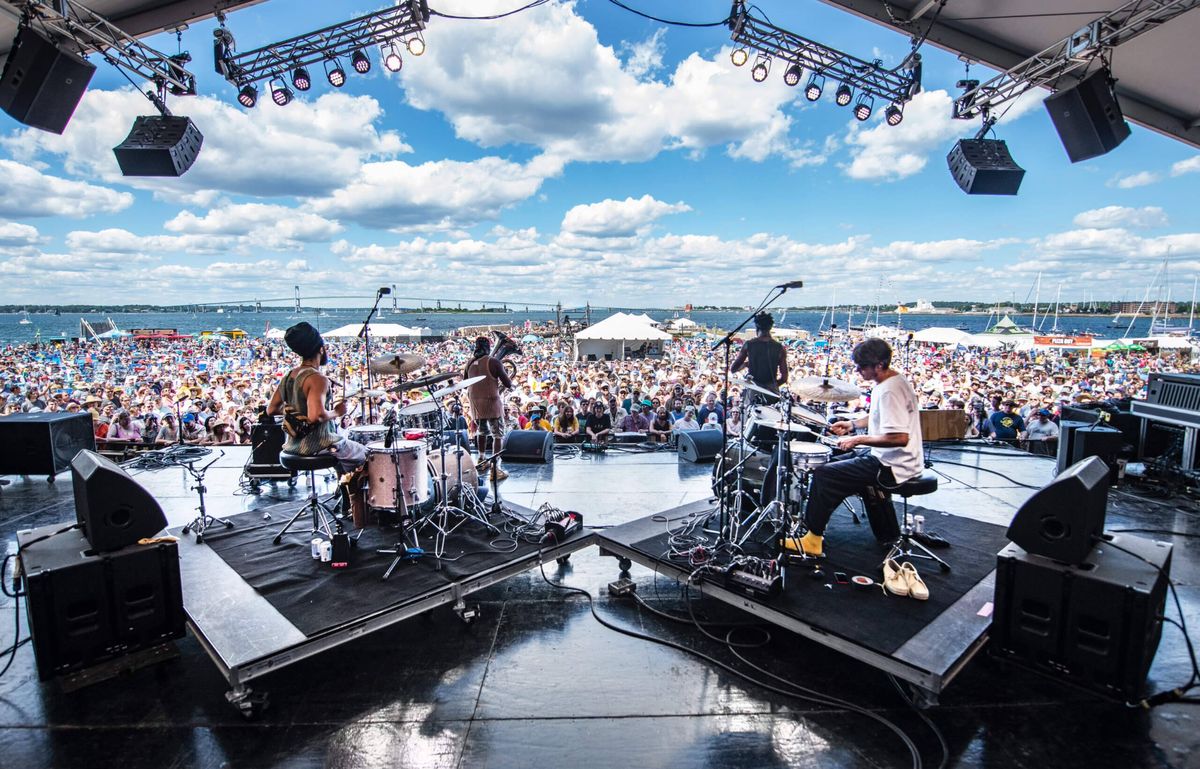

Festival
Where Is Newport Jazz Festival
Modified: January 22, 2024
Discover the location of the renowned Newport Jazz Festival, a must-visit festival for music enthusiasts. Join us for an unforgettable experience filled with vibrant performances and the best jazz artists from around the world.
(Many of the links in this article redirect to a specific reviewed product. Your purchase of these products through affiliate links helps to generate commission for AudioLover.com, at no extra cost. Learn more)
Table of Contents
Introduction
The Newport Jazz Festival is a renowned annual event that celebrates the rich heritage and vibrant spirit of jazz music. It is considered one of the oldest and most prestigious jazz festivals in the world, attracting music lovers and performers from all corners of the globe.
Founded in 1954 by jazz enthusiast George Wein, the Newport Jazz Festival has become a cultural icon in the jazz community. Over the years, it has evolved into a platform for showcasing the talents of both established and emerging jazz artists, and has played a significant role in the development and appreciation of the genre.
What sets the Newport Jazz Festival apart is its unique and picturesque location in Newport, Rhode Island. The festival initially took place at the Newport Casino, a historic venue known for its stunning architecture and scenic views. This setting added a touch of elegance and allure to the festivities, creating an unforgettable experience for both musicians and audiences alike.
Throughout its history, the Newport Jazz Festival has witnessed countless legendary performances that have shaped the journey of jazz. Jazz icons such as Louis Armstrong, Duke Ellington, and Ella Fitzgerald have graced its stages, leaving an indelible mark on the festival’s legacy.
Today, the Newport Jazz Festival continues to thrive as a testament to the enduring power and influence of jazz music. It has expanded its reach beyond just the traditional jazz genre, incorporating elements of fusion, Latin jazz, and contemporary improvisation to reflect the evolving nature of the art form.
With its commitment to preserving the jazz tradition while also embracing new sounds and ideas, the Newport Jazz Festival remains an essential destination for both jazz enthusiasts and aficionados seeking to immerse themselves in the magic of this timeless genre.
History of the Newport Jazz Festival
The Newport Jazz Festival has a storied history that spans over half a century, filled with memorable performances, iconic artists, and groundbreaking moments in jazz music. It all began in 1954 when George Wein, a passionate jazz fan and promoter, organized the first festival in Newport, Rhode Island.
Wein’s vision was to create a platform where jazz musicians could showcase their talent and connect with a broader audience. The inaugural Newport Jazz Festival was a resounding success, featuring an impressive lineup that included jazz legends such as Dizzy Gillespie, Billie Holiday, and Ella Fitzgerald.
Over the years, the festival grew in popularity and stature, attracting both established jazz artists and up-and-coming musicians looking to make their mark. The festival became known for its laid-back and inclusive atmosphere, where fans could enjoy world-class performances in a relaxed and picturesque setting.
One of the defining moments in the history of the Newport Jazz Festival came in 1956 when pianist and composer Duke Ellington took the stage to perform his famous composition, “Diminuendo and Crescendo in Blue.” The crowd’s enthusiastic response, including an iconic solo by tenor saxophonist Paul Gonsalves, led to an extended standing ovation and firmly established the festival’s reputation as a venue for groundbreaking and unforgettable performances.
In the 1960s, the Newport Jazz Festival became a platform for showcasing not only traditional jazz but also the emerging genre of avant-garde jazz. Artists like John Coltrane and Charles Mingus pushed the boundaries of the art form, captivating audiences with their innovative and experimental approach to music.
However, the festival faced challenges in the late ’60s and early ’70s. Financial difficulties and changing musical landscapes led to a hiatus in 1971. But in 1981, the Newport Jazz Festival made a triumphant return, thanks to the dedication and efforts of George Wein.
Since its revival, the Newport Jazz Festival has continued to evolve and adapt to the changing times. It remains a significant event in the jazz calendar, attracting a diverse lineup of artists representing various styles and influences within the genre.
Today, the Newport Jazz Festival stands as a testament to the enduring legacy of jazz music and its ability to captivate and inspire audiences of all generations. It continues to be a space where the past, present, and future of jazz converge, fostering a sense of community and celebration for both performers and passionate jazz enthusiasts.
Relocation of the Festival
Throughout its history, the Newport Jazz Festival has undergone several relocations, each one contributing to the festival’s unique character and further solidifying its reputation as a premiere jazz event.
Initially, the festival took place at the Newport Casino, a historic venue known for its stunning architecture and picturesque location. The casino provided a charming backdrop for the early years of the festival, adding a touch of elegance and glamour to the proceedings.
However, as the popularity of the festival grew, the organizers realized the need for a larger and more accommodating space to accommodate the growing number of attendees. In 1960, the festival moved to Freebody Park, which offered a more spacious area for performances and audience seating.
The festival’s relocation to Freebody Park not only allowed for increased capacity but also opened up opportunities for outdoor performances, creating a more relaxed and enjoyable atmosphere for festival-goers. The park’s expansive green spaces provided ample room for audiences to spread out picnic blankets and take in the music while basking in the warm summer weather.
After several successful years at Freebody Park, the festival faced another relocation in 1965 when it moved to Festival Field at Fort Adams State Park. This move was prompted by the desire for an even larger space that could accommodate the growing number of fans flocking to the festival.
The move to Fort Adams State Park proved to be a game-changer for the festival. The park’s expansive grounds and breathtaking waterfront location created an unparalleled backdrop for the performances. Attendees could enjoy the music while taking in stunning views of the Newport Harbor and the iconic Newport Bridge.
In 2008, the festival briefly relocated to the International Tennis Hall of Fame due to renovations at Fort Adams State Park. However, the following year, it returned to its beloved home at Fort Adams, where it continues to be held to this day.
The relocation of the Newport Jazz Festival has allowed for continual growth and enhancement of the festival experience. Each venue change has brought with it new possibilities and an opportunity to improve the logistics and overall enjoyment of the event.
While the exact location may have shifted over the years, one thing remains constant: the Newport Jazz Festival’s commitment to providing an unforgettable experience for jazz lovers worldwide. The festival’s ability to adapt and find new homes reflects its resilience and determination to carry on the legacy of jazz music in its purest form.
Current Location of the Festival
The Newport Jazz Festival has found its permanent home at Fort Adams State Park in Newport, Rhode Island. This picturesque location has become synonymous with the festival and adds to its charm and allure.
The choice to make Fort Adams State Park the permanent venue for the festival is not a decision that was taken lightly. The park offers a stunning waterfront setting, with panoramic views of the Newport Harbor and the iconic Newport Bridge. The natural beauty of the surroundings creates a truly idyllic backdrop for the performances and immerses attendees in a unique and memorable experience.
Fort Adams State Park provides ample space to accommodate the large crowds that flock to the festival every year. With sprawling green lawns, the park allows attendees to set up picnic blankets and enjoy the music while basking in the sunshine. It also offers convenient facilities and amenities, including food and beverage vendors, restrooms, and ample parking.
The festival takes advantage of the park’s versatility by organizing performances across multiple stages. Attendees can explore different areas of the park and discover a diverse range of jazz acts happening simultaneously. This format adds a sense of excitement and variety, allowing attendees to curate their own festival experience.
One of the highlights of the current location is the Fort Stage, which is set against the backdrop of the historic Fort Adams fortifications. This iconic stage has hosted some of the most memorable and awe-inspiring performances in the history of the festival. The combination of music, history, and natural beauty creates an unforgettable atmosphere that truly captures the essence of the Newport Jazz Festival.
Additionally, the proximity of Fort Adams State Park to the lively and vibrant city of Newport adds to the festival’s appeal. Attendees can easily explore the charming streets, dine at local restaurants, and enjoy the vibrant arts scene before or after the festival. The connection between the festival and the city creates a sense of community and excitement, spanning beyond the festival grounds.
The current location of the Newport Jazz Festival at Fort Adams State Park has become an integral part of the festival’s identity. It perfectly encapsulates the fusion of music, nature, and history that defines the festival and makes it a beloved destination for jazz enthusiasts from around the world.
Importance of the Newport Jazz Festival
The Newport Jazz Festival holds immense significance in the world of jazz music and beyond. It has played a pivotal role in the development and promotion of the genre, leaving a lasting impact on artists, audiences, and the broader cultural landscape. Here are some of the key reasons why the Newport Jazz Festival is of utmost importance:
Preserving Jazz Tradition: The festival serves as a platform for preserving the rich heritage and tradition of jazz music. By showcasing established jazz icons alongside emerging talent, the Newport Jazz Festival keeps the genre’s legacy alive and ensures that future generations have the opportunity to appreciate and engage with its timeless beauty and complexity.
Celebrating Artistic Diversity: The festival showcases the diverse range of styles, sub-genres, and influences within the jazz genre. From traditional jazz to fusion, Latin jazz, avant-garde, and everything in between, the Newport Jazz Festival celebrates the unique voices and creative expressions of artists, fostering a spirit of experimentation and innovation.
Nurturing Emerging Talent: The festival provides a platform for up-and-coming jazz musicians to showcase their skills and gain exposure. Many artists have had career-defining moments at the Newport Jazz Festival, catapulting them into the spotlight and helping to launch successful careers in the industry.
Promoting Jazz Appreciation: The festival plays a crucial role in promoting jazz appreciation and education. Through workshops, masterclasses, and panel discussions, the Newport Jazz Festival provides valuable learning opportunities for aspiring musicians and jazz enthusiasts, deepening their understanding of the genre and its historical significance.
Cultural Exchange and Collaboration: The festival has a long history of promoting cultural exchange by bringing together artists from different backgrounds and countries. It serves as a platform for collaboration and cross-pollination of musical ideas, fostering a sense of unity and understanding among diverse communities.
Economic Impact: The Newport Jazz Festival has a significant economic impact on the local community and the wider region. The influx of visitors during the festival creates jobs, boosts tourism, and supports local businesses, contributing to the overall growth and vitality of the area.
Inspiring Future Generations: The Newport Jazz Festival serves as a source of inspiration for aspiring musicians and future generations. By witnessing live performances and experiencing the magic of jazz firsthand, young musicians are encouraged to pursue their passion and contribute to the evolving landscape of the genre.
In summary, the Newport Jazz Festival holds immense importance as a cultural institution that showcases and celebrates jazz music. Its influence extends beyond the world of music, impacting the arts, education, tourism, and the overall cultural fabric of the communities it touches. The festival’s enduring legacy reflects the enduring power and relevance of jazz as an art form that continues to captivate and inspire audiences around the world.
Notable Performances at the Festival
The Newport Jazz Festival has a long and illustrious history of hosting legendary performances that have left an indelible mark on the jazz world. From iconic artists to groundbreaking moments, here are some of the most notable performances in the festival’s history:
Louis Armstrong and His All-Stars (1955): Louis Armstrong, one of the most influential figures in jazz history, took the stage with his All-Stars band and delivered a mesmerizing performance. His dynamic trumpet playing and charismatic stage presence captivated the audience, solidifying his legacy at the Newport Jazz Festival.
Duke Ellington’s “Diminuendo and Crescendo in Blue” (1956): Duke Ellington’s performance of “Diminuendo and Crescendo in Blue” at the Newport Jazz Festival became an iconic moment in jazz history. The electrifying solo by tenor saxophonist Paul Gonsalves during the performance led to an extended standing ovation, showcasing the power of improvisation and establishing the festival as a venue for groundbreaking jazz performances.
Miles Davis’ Electric Set (1969): In a departure from his traditional acoustic sound, legendary trumpeter Miles Davis took the stage with his electric band. This set marked a significant shift in Davis’ musical direction, embracing fusion and incorporating elements of rock and funk. The performance ignited controversy and fascination among fans and critics, and remains a landmark moment in the exploration of jazz’s boundaries.
Ella Fitzgerald’s Jubilant Comeback (1973): After a period of relative absence from the music scene, Ella Fitzgerald made a triumphant comeback at the Newport Jazz Festival in 1973. Her revitalized performance showcased her unmatched vocal prowess, and it signaled a resurgence in her career, reminding audiences of her status as the “First Lady of Song.”
Wynton Marsalis’ Breakthrough Performance (1982): Trumpeter Wynton Marsalis’ performance in 1982 established him as one of the brightest young stars in the jazz world. His virtuoso playing and reverence for traditional jazz earned him critical acclaim and launched a career that has since spanned multiple decades and genres.
Weather Report’s Dynamic Fusion Set (1975): The fusion supergroup Weather Report brought their unique blend of jazz, funk, and rock to the Newport Jazz Festival in 1975. Their dynamic and innovative performance showcased the possibilities of genre-blending, leaving a lasting impact on the festival’s programming and cementing their place in jazz history.
Herbie Hancock’s Futuristic Performance (1988): Pianist Herbie Hancock’s performance at the Newport Jazz Festival in 1988 showcased his love for experimentation and exploration. Incorporating synthesizers and electronic instruments, Hancock challenged conventional notions of jazz, pushing boundaries and inspiring a new generation of musicians.
These performances, among many others, highlight the diversity, innovation, and artistic brilliance that the Newport Jazz Festival has boasted throughout its history. Each year, the festival continues to feature groundbreaking acts and exceptional musicians, ensuring that the tradition of unforgettable performances lives on.
Future of the Newport Jazz Festival
The future of the Newport Jazz Festival holds immense promise as it continues to evolve and adapt while staying true to its rich heritage and musical legacy. Here are some key aspects that indicate a bright future for this esteemed jazz event:
Expanding musical boundaries: As the jazz genre continues to evolve, the Newport Jazz Festival will likely explore new styles, sub-genres, and musical influences. This could include further integration of contemporary jazz, fusion, world music, and collaborations with artists from different genres, ensuring that the festival remains relevant and appealing to diverse audiences.
Showcasing emerging talent: The festival has a reputation for nurturing and promoting emerging jazz artists. The future will likely continue to shine a spotlight on talented up-and-coming musicians, providing them with a platform to showcase their creativity and contribute to the evolution of jazz. By fostering and supporting emerging talent, the Newport Jazz Festival helps to shape the future of the genre.
Incorporation of technology and digital advancements: The digital era presents new opportunities for sharing the magic of the festival with people around the world. Live streaming, virtual reality experiences, and interactive online platforms can enhance the festival’s accessibility and extend its reach globally. Embracing technological advancements will ensure that the festival remains relevant and engaging in the ever-changing digital landscape.
Collaborations and cultural exchange: The Newport Jazz Festival will likely continue to foster collaborations and cultural exchange among artists from different backgrounds. These collaborations not only bring diverse perspectives and influences to the festival but also promote unity and understanding among different cultures. By showcasing the power of music as a universal language, the festival can inspire meaningful connections and bridge gaps between communities.
Fostering jazz education and outreach: The future of the Newport Jazz Festival may involve a greater emphasis on educational programs, workshops, and outreach initiatives. These efforts may aim to cultivate the next generation of jazz musicians, deepen the appreciation for jazz music among diverse audiences, and ensure the continued growth and vitality of the art form.
Environmental sustainability: As the world becomes more environmentally conscious, the future of the Newport Jazz Festival may include a greater focus on sustainability and eco-friendly practices. Incorporating green initiatives, reducing carbon footprint, and promoting environmental awareness can create a more sustainable and environmentally responsible festival experience.
Overall, the future of the Newport Jazz Festival is bright and promising. By embracing innovation, nurturing emerging talent, fostering collaborations, and staying true to its foundation of celebrating the beauty and richness of jazz, the festival will continue to thrive and inspire generations to come.
Conclusion
The Newport Jazz Festival stands as a testament to the enduring power, innovation, and cultural significance of jazz music. With its rich history, iconic performances, and picturesque location, the festival has solidified its place as one of the premier jazz events in the world.
From its humble beginnings in 1954, the Newport Jazz Festival has continuously evolved and adapted to the ever-changing landscape of jazz. It has showcased the talents of legendary artists and provided a platform for emerging musicians to showcase their skills and creativity. The festival’s commitment to preserving the jazz tradition while embracing new sounds and ideas has kept it at the forefront of the genre.
Not only does the Newport Jazz Festival entertain and educate audiences, but it also plays a vital role in promoting jazz appreciation, fostering cultural exchange, and inspiring future generations of musicians. Its impact extends beyond the festival grounds, contributing to the economic growth and vitality of the local community and the wider region.
As the festival looks to the future, it will likely continue to explore new musical territories, provide opportunities for emerging talent, and embrace technological advancements. It will remain a beacon of creativity, collaboration, and cultural celebration, bridging gaps and inspiring connections through the universal language of music.
In conclusion, the Newport Jazz Festival is a vital force in the world of jazz, preserving the genre’s heritage while propelling it forward. It serves as a place of inspiration, a platform for artistic expression, and a gathering of like-minded individuals who share a love for jazz music. As it enters each new chapter, the festival will continue to shine a spotlight on the beauty, innovation, and enduring magic of jazz, ensuring its legacy for generations to come.

